Effect of Fermentation on the Quality of Dried Hollow Noodles and the Related Starch Properties
Abstract
1. Introduction
2. Materials and Methods
2.1. Materials
2.2. Preparation for Noodles
2.3. Analysis of Cooking Properties
2.4. Analysis of Texture Properties
2.5. Chemical Properties of Noodles
2.5.1. pH
2.5.2. Reducing Sugar
2.5.3. Amylose Content
2.6. Analysis of Water Distribution
2.7. Degree of Gelatinization of Noodles
2.8. Starch Digestibility (In Vitro) of Noodles
2.9. Isolation of Starch from Dried Noodles
2.10. Scanning Electron Microscopy (SEM)
2.11. Differential Scanning Calorimetry (DSC)
2.12. X-ray Diffractometry (XRD)
2.13. Laser Confocal Micro-Raman (LCM-Raman) Spectroscopy
2.14. Statistical Analysis
3. Discussion
3.1. Effect of Fermentation Methods on Cooking Properties of Dried Hollows Noodles
3.2. Effect of Fermentation Methods on the Texture Properties of Cooked Noodles
3.3. Effect of Fermentation Methods on the Chemical Properties of Noodles
3.3.1. pH
3.3.2. Reducing Sugars
3.3.3. Amylose Content
3.4. Effect of Fermentation Methods on the Water Absorption Characteristics and Gelatinization Degree of Noodles during Cooking
3.4.1. Water Absorption Characteristics
3.4.2. Gelatinization Degree of Noodles
3.5. Effect of Fermentation Methods on the Starch Digestibility (In Vitro) of Noodles
3.6. Starch Morphology by Scanning Electron Microscopy
3.7. Effect of Fermentation Method on the Starch Properties from Dried Noodles
3.7.1. Thermal Properties
3.7.2. Crystalline Properties
3.7.3. Short-Range Ordered Structure
4. Conclusions
Author Contributions
Funding
Data Availability Statement
Acknowledgments
Conflicts of Interest
References
- Xiong, X.; Liu, C.; Song, M.; Zheng, X. Effect of characteristics of different wheat flours on the quality of fermented hollow noodles. Food Sci. Nutr. 2021, 9, 4927–4937. [Google Scholar] [CrossRef]
- Ge, Z.; Wang, W.; Xu, M.; Gao, S.; Zhao, Y.; Wei, X.; Zong, W. Effects of Lactobacillus plantarum and Saccharomyces cerevisiae co-fermentation on the structure and flavor of wheat noodles. J. Sci. Food Agric. 2022, 102, 4697–4706. [Google Scholar] [CrossRef]
- Li, N.; Zhang, B.; Zhao, S.; Niu, M.; Jia, C.; Huang, Q.; Lin, Q. Influence of Lactobacillus/Candida fermentation on the starch structure of rice and the related noodle features. Int. J. Biol. Macromol 2019, 121, 882–888. [Google Scholar] [CrossRef]
- Zhu, J.; Chen, Y.; Lv, C.; Wu, W.; Qin, S. Study on optimization of removing cadmium by Lactobacillus fermentation and its effect on physicochemical and quality properties of rice noodles. Food Control. 2019, 106, 106740. [Google Scholar] [CrossRef]
- Chillo, S.; Laverse, J.; Falcone, P.M.; Protopapa, A.; Del Nobile, M.A. Influence of the addition of buckwheat flour and durum wheat bran on spaghetti quality. J. Cereal Sci. 2008, 47, 144–152. [Google Scholar] [CrossRef]
- Han, L.; Lu, Z.; Hao, X.; Cheng, Y.; Li, L. Impact of Calcium Hydroxide on the Textural Properties of Buckwheat Noodles. J. Texture Stud. 2012, 43, 227–234. [Google Scholar] [CrossRef]
- Su, X.; Wu, F.; Zhang, Y.; Yang, N.; Chen, F.; Jin, Z.; Xu, X. Effect of organic acids on bread quality improvement. Food Chem. 2019, 278, 267–275. [Google Scholar] [CrossRef]
- Edema, M.O.; Emmambux, M.N.; Taylor, J.R.N. Improvement of fonio dough properties through starch modification by sourdough fermentation. Starch-Stärke 2013, 65, 9–10. [Google Scholar] [CrossRef]
- Yang, Y.L.; Guan, E.Q.; Zhang, L.L.; Pang, J.Y.; Li, M.M.; Bian, K. Effects of vacuum degree, mixing speed, and water amount on the moisture distribution and rheological properties of wheat flour dough. J. Food Sci. 2021, 86, 2421–2433. [Google Scholar] [CrossRef]
- Liu, K.; Liu, Q. Enzymatic determination of total starch and degree of starch gelatinization in various products. Food Hydrocoll. 2020, 103, 105639. [Google Scholar] [CrossRef]
- Minekus, M.; Alminger, M.; Alvito, P.; Ballance, S.; Bohn, T.; Carrière, F.; Boutrou, R.; Corredig, M.; Dupont, D.; Dufour, C.; et al. A standardised static in vitro digestion method suitable for food-an international consensus. Food Funct. 2014, 5, 1113–1124. [Google Scholar] [CrossRef]
- Huang, S.; Chi, C.; Li, X.; Zhang, Y.; Chen, L. Understanding the structure, digestibility, texture and flavor attributes of rice noodles complexation with xanthan and dodecyl gallate. Food Hydrocoll. 2022, 127, 107538. [Google Scholar] [CrossRef]
- Noda, T.; Ichinose, Y.; Takigawa, S.; Matsuura-Endo, C.; Abe, H.; Saito, K.; Yamauchi, H. The pasting properties of flour and starch in wheat grain damaged by α-amylase. Food Sci. Technol. Res. 2003, 9, 387–391. [Google Scholar] [CrossRef]
- Ding, L.; Huang, Q.; Xiang, W.; Fu, X.; Zhang, B.; Wu, J.Y. Chemical cross-linking reduces in vitro starch digestibility of cooked potato parenchyma cells. Food Hydrocoll. 2022, 124, 107297. [Google Scholar] [CrossRef]
- Zhao, T.; Li, X.; Zhu, R.; Ma, Z.; Liu, L.; Wang, X.; Hu, X. Effect of natural fermentation on the structure and physicochemical properties of wheat starch. Carbohydr. Polym. 2019, 218, 163–169. [Google Scholar] [CrossRef] [PubMed]
- Xu, C.-Y.; Guo, X.-N.; Zhu, K.-X. Effect of pre-treated wheat bran on semi-dried whole wheat noodles for extending shelf-life and improving quality characteristics. LWT 2021, 146, 111503. [Google Scholar] [CrossRef]
- Loponen, J.; Mikola, M.; Katina, K.; Sontag-Strohm, T.; Salovaara, H. Degradation of HMW glutenins during wheat sourdough fermentations. Cereal Chem. 2004, 81, 87–93. [Google Scholar] [CrossRef]
- Baik, B.-K.; Lee, M.-R. Effects of starch amylose content of wheat on Textural Properties of White Salted Noodles. Cereal Chem. 2003, 80, 304–309. [Google Scholar] [CrossRef]
- Jayaram, V.B.; Cuyvers, S.; Lagrain, B.; Verstrepen, K.J.; Delcour, J.A.; Courtin, C.M. Mapping of Saccharomyces cerevisiae metabolites in fermenting wheat straight-dough reveals succinic acid as pH-determining factor. Food Chem. 2013, 136, 301–308. [Google Scholar] [CrossRef]
- Liu, W.; Brennan, M.A.; Serventi, L.; Brennan, C.S. Effect of cellulase, xylanase and α-amylase combinations on the rheological properties of Chinese steamed bread dough enriched in wheat bran. Food Chem. 2017, 234, 93–102. [Google Scholar] [CrossRef]
- Pranoto, Y.; Anggrahini, S.; Efendi, Z. Effect of natural and Lactobacillus plantarum fermentation on in-vitro protein and starch digestibilities of sorghum flour. Food Biosci. 2013, 2, 46–52. [Google Scholar] [CrossRef]
- Al-Ansi, W.; Sajid, B.M.; Mahdi, A.A.; Al-Maqtari, Q.A.; Al-Adeeb, A.; Ahmed, A.; Fan, M.; Li, Y.; Qian, H.; Jinxin, L.; et al. Molecular structure, morphological, and physicochemical properties of highlands barley starch as affected by natural fermentation. Food Chem. 2021, 356, 129665. [Google Scholar] [CrossRef]
- Gavilanes, F.Z.; Andrade, D.S.; Zucareli, C.; Horácio, E.H.; Yunes, J.S.; Barbosa, A.P.; de Fátima Guimarães, M. Co-inoculation of Anabaena cylindrica with Azospirillum brasilense increases grain yield of maize hybrids. Rhizosphere 2020, 15, 100224. [Google Scholar] [CrossRef]
- Wu, H.; Liu, H.N.; Ma, A.M.; Zhou, J.Z.; Xia, X.D. Synergetic effects of Lactobacillus plantarum and Rhizopus oryzae on physicochemical, nutritional and antioxidant properties of whole-grain oats (Avena sativa L.) during solid-state fermentation. LWT 2022, 154, 112687. [Google Scholar] [CrossRef]
- Laurent, J.; Timmermans, E.; Struyf, N.; Verstrepen, K.J.; Courtin, C.M. Variability in yeast invertase activity determines the extent of fructan hydrolysis during wheat dough fermentation and final Fodmap levels in bread. Int. J. Food Microbiol. 2020, 326, 108648. [Google Scholar] [CrossRef] [PubMed]
- Reyes, I.; Cruz-Sosa, F.; Roman-Guerrero, A.; Vernon-Carter, E.J.; Alvarez-Ramirez, J. Structural changes of corn starch during Saccharomyces cerevisiae fermentation. Starch-Stärke 2016, 68, 961–971. [Google Scholar] [CrossRef]
- Xu, M.; Zou, J.; Zhao, X.; Feng, Y.; Duan, R.; Yang, B. Effect of lactobacteria fermentation on structure and physicochemical properties of Chinese yam starch (Dioscorea opposita Thunb.). Food Chem. 2022, 387, 132873. [Google Scholar] [CrossRef]
- Nawaz, A.; Li, E.; Khalifa, I.; Irshad, S.; Walayat, N.; Mohammed HH, H.; Simirgiotis, M.J. Evaluation of fish meat noodles: Physical property, dough rheology, chemistry and water distribution properties. Int. J. Food Sci. Technol. 2021, 56, 1061–1069. [Google Scholar] [CrossRef]
- Zhang, J.; Kong, H.; Li, C.; Ban, X.; Gu, Z.; Li, Z. Highly branched starch accelerates the restoration of edible quality of dried rice noodles during rehydration. Carbohydr. Polym. 2022, 292, 119612. [Google Scholar] [CrossRef]
- Renzetti, S.; van den Hoek, I.A.F.; van der Sman, R.G.M. Mechanisms controlling wheat starch gelatinization and pasting behaviour in presence of sugars and sugar replacers: Role of hydrogen bonding and plasticizer molar volume. Food Hydrocoll. 2021, 119, 106880. [Google Scholar] [CrossRef]
- Zhai, Y.; Li, X.; Bai, Y.; Jin, Z.; Svensson, B. Maltogenic α-amylase hydrolysis of wheat starch granules: Mechanism and relation to starch retrogradation. Food Hydrocoll. 2022, 124, 107256. [Google Scholar] [CrossRef]
- Majzoobi, M.; Beparva, P. Effects of acetic acid and lactic acid on physicochemical characteristics of native and cross-linked wheat starches. Food Chem. 2014, 147, 312–317. [Google Scholar] [CrossRef] [PubMed]
- Alvarado, P.M.; Grosmaire, L.; Dufour, D.; Toro, A.G.; Sánchez, T.; Calle, F.; Tran, T. Combined effect of fermentation, sun-drying and genotype on breadmaking ability of sour cassava starch. Carbohydr. Polym. 2013, 98, 1137–1146. [Google Scholar] [CrossRef] [PubMed]
- Tahir, R.; Ellis, P.R.; Butterworth, P.J. The relation of physical properties of native starch granules to the kinetics of amylolysis catalysed by porcine pancreatic α-amylase. Carbohydr. Polym. 2010, 81, 57–62. [Google Scholar] [CrossRef]
- Ayaram, V.B.; Cuyvers, S.; Verstrepen, K.J.; Delcour, J.A.; Courtin, C.M. Succinic acid in levels produced by yeast (Saccharomyces cerevisiae) during fermentation strongly impacts wheat bread dough properties. Food Chem. 2014, 151, 421–428. [Google Scholar] [CrossRef]
- Liu, X.; Luan, H.; Yu, J.; Wang, S.; Wang, S.; Copeland, L. A method for characterizing short-range molecular order in amorphous starch. Carbohydr Polym. 2020, 242, 116405. [Google Scholar] [CrossRef] [PubMed]



| Parameters | Samples | ||||
|---|---|---|---|---|---|
| Control | HN1 | HN2 | LPHN | KJHN | |
| Cooking properties | |||||
| CT/s | 460.00 ± 0.00 a | 407.50 ± 3.54 b | 332.50 ± 3.54 c | 267.50 ± 3.54 d | 252.50 ± 3.54 d |
| CL/% | 5.22 ± 0.11 a | 4.25 ± 0.02 b | 4.01 ± 0.05 c | 6.81 ± 0.11 d | 5.17 ± 0.12 a |
| Texture properties | |||||
| Hardness/N | 50.49 ± 1.93 c | 40.68 ± 3.07 ba | 46.48 ± 2.46 ce | 40.47 ± 0.65 a | 38.99 ± 2.28 da |
| Springiness/% | 16.80 ± 0.08 a | 19.35 ± 0.13 b | 17.35 ± 0.25 a | 15.52 ± 0.58 c | 16.76 ± 0.62 a |
| Chewiness/N | 1.58 ± 0.02 c | 1.49 ± 0.05 a | 1.45 ± 0.03 a | 1.19 ± 0.12 b | 1.16 ± 0.04 b |
| Tensile Properties | |||||
| Force/N | 28.14 ± 1.50 a | 22.54 ± 2.00 b | 24.53 ± 0.42 c | 16.14 ± 0.51 d | 12.75 ± 1.17 e |
| Distance/mm | 55.62 ± 1.75 a | 43.93 ± 7.5 b | 56.33 ± 3.94 a | 54.27 ± 7.58 a | 44.50 ± 9.39 b |
| Chemical Properties | |||||
| pH | 6.04 ± 0.06 e | 5.83 ± 0.04 a | 5.20 ± 0.01 b | 4.02 ± 0.03 c | 5.67 ± 0.03 d |
| Reducing sugar/(mg/g) | 72.40 ± 0.46 e | 54.45 ± 0.16 a | 35.49 ± 0.47 b | 184.78 ± 0.00 c | 203.83 ± 1.66 d |
| Amylose content/% | 26.30 ± 0.15 b | 25.96 ± 0.10 b | 25.90 ± 0.22 b | 23.94 ± 0.35 a | 24.18 ± 0.12 a |
| Appearance | 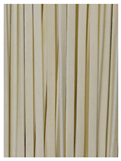 | 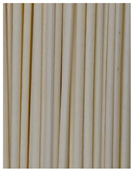 | 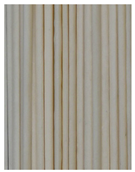 | 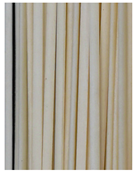 | 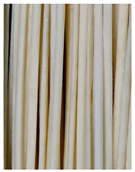 |
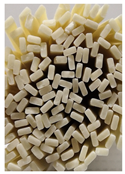 |  | 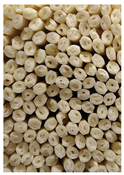 | 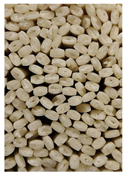 | 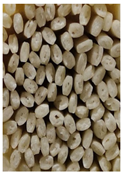 | |
| Size | 1.1 mm × 2.3 mm | 1.6 mm × 2.1 mm | 1.5 mm × 2.1 mm | 1.6 mm × 2.1 mm | 1.7 mm × 2.1 mm |
| Sample | Thermal Properties | Relative Crystallinity % | Short-Range Order Degree | |||
|---|---|---|---|---|---|---|
| T0 (°C) | Tp (°C) | Tc (°C) | ΔH (J/g) | FWHM | ||
| Control | 54.92 ± 0.12 b | 63.67 ± 0.23 c | 71.75 ± 0.82 b | 5.17 ± 0.21 b | 20.59 ± 0.40 b | 19.48 ± 0.12 b |
| HN1 | 54.92 ± 0.59 b | 63.94 ± 0.10 c | 73.00 ± 0.83 b | 5.16 ± 0.19 b | 20.36 ± 0.20 b | 19.36 ± 0.16 b |
| HN2 | 54.92 ± 0.12 b | 63.83 ± 0.00 c | 73.50 ± 0.71 b | 5.25 ± 0.13 b | 20.60 ± 0.34 b | 19.25 ± 0.30 b |
| LPHN | 55.72 ± 0.25 a | 65.83 ± 0.54 a | 75.17 ± 0.73 a | 6.80 ± 0.24 a | 22.19 ± 0.38 a | 18.60 ± 0.14 a |
| KJHN | 55.42 ± 0.83 a | 65.20 ± 0.47 b | 76.50 ± 0.71 a | 6.86 ± 0.28 a | 21.86 ± 0.54 a | 18.52 ± 0.13 a |
Publisher’s Note: MDPI stays neutral with regard to jurisdictional claims in published maps and institutional affiliations. |
© 2022 by the authors. Licensee MDPI, Basel, Switzerland. This article is an open access article distributed under the terms and conditions of the Creative Commons Attribution (CC BY) license (https://creativecommons.org/licenses/by/4.0/).
Share and Cite
Lu, X.; Guo, X.; Zhu, K. Effect of Fermentation on the Quality of Dried Hollow Noodles and the Related Starch Properties. Foods 2022, 11, 3685. https://doi.org/10.3390/foods11223685
Lu X, Guo X, Zhu K. Effect of Fermentation on the Quality of Dried Hollow Noodles and the Related Starch Properties. Foods. 2022; 11(22):3685. https://doi.org/10.3390/foods11223685
Chicago/Turabian StyleLu, Xue, Xiaona Guo, and Kexue Zhu. 2022. "Effect of Fermentation on the Quality of Dried Hollow Noodles and the Related Starch Properties" Foods 11, no. 22: 3685. https://doi.org/10.3390/foods11223685
APA StyleLu, X., Guo, X., & Zhu, K. (2022). Effect of Fermentation on the Quality of Dried Hollow Noodles and the Related Starch Properties. Foods, 11(22), 3685. https://doi.org/10.3390/foods11223685







